- Step-by-Step Guide on Growing Healthy Petunia Seedlings
- 1. Gather the necessary supplies
- 2. Prepare the seed starting trays or pots
- 3. Sow the petunia seeds
- 4. Provide proper lighting
- 5. Water the seedlings
- 6. Provide ventilation
- 7. Thin out the seedlings
- 8. Fertilize the seedlings
- 9. Harden off the seedlings
- 10. Transplant the seedlings
- Choose the Right Seeds for Optimal Development
- Prepare a Suitable Growing Environment
- Start the Germination Process
- Provide Adequate Light and Temperature
- Light Requirements
- Temperature Requirements
- Watering and Fertilizing Techniques
- Watering
- Fertilizing
- Proper Transplanting Techniques
- Preventing and Managing Common Issues
- 1. Overwatering
- 2. Underwatering
- 3. Lack of Sunlight
- 4. Nutrient Deficiencies
- 5. Pests and Diseases
- Gradual Acclimation to Outdoor Conditions
- 1. Prepare the seedling for outdoor conditions
- 2. Start with short periods of outdoor exposure
- 3. Protect the seedling from extreme conditions
- 4. Gradually increase sunlight exposure
- 5. Transition to permanent outdoor placement
- Questions and Answers:
- What is the best way to grow petunia seedlings?
- How long does it take for petunia seedlings to germinate?
- What should I do once my petunia seedlings have germinated?
- How often should I water my petunia seedlings?
- What kind of fertilizer should I use for petunia seedlings?
- When should I transplant my petunia seedlings into larger pots?
- Videos: How To Grow Petunia From Seeds (With Full Updates)
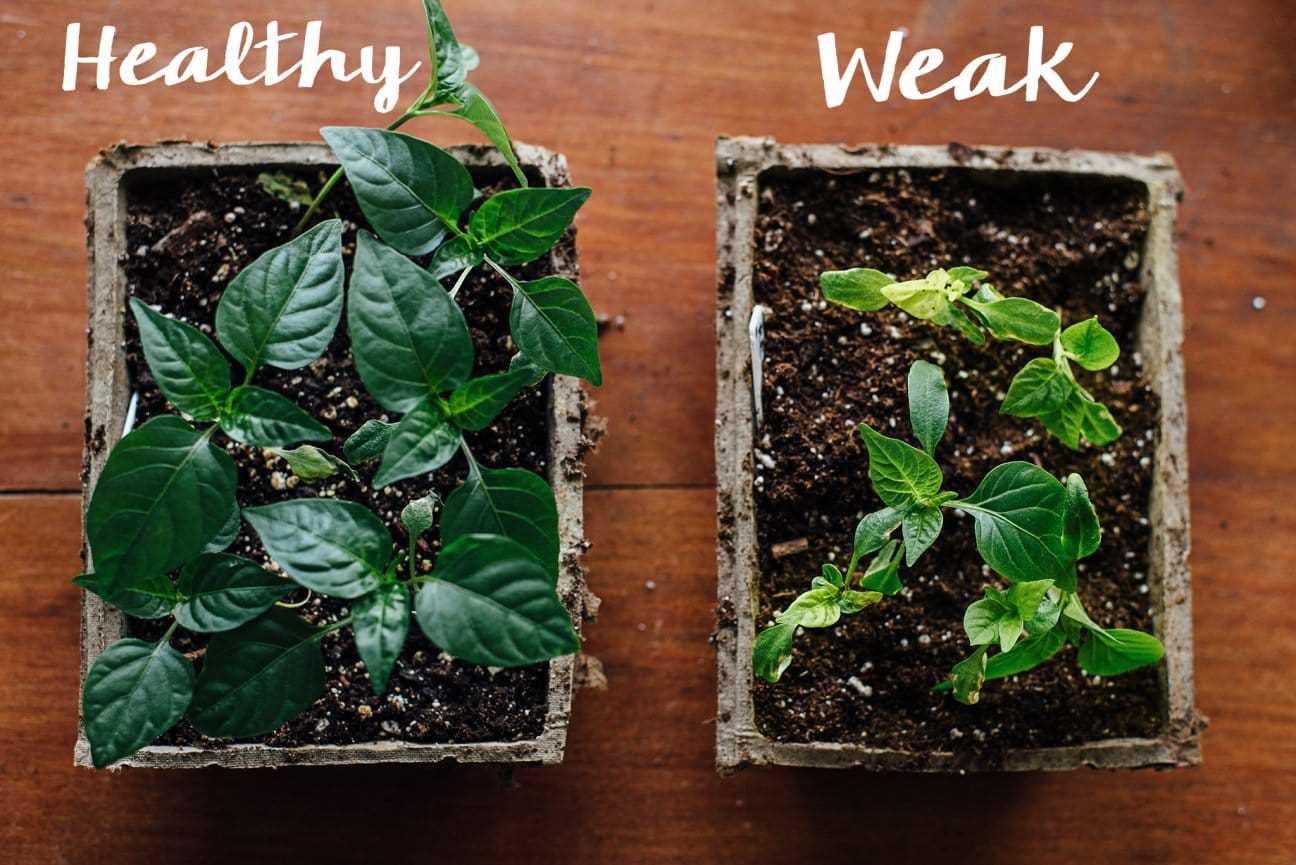
Petunias are popular flowering plants that add vibrant colors to gardens, balconies, and hanging baskets. Starting petunias from seeds can be a rewarding and cost-effective way to fill your garden with these beautiful flowers. However, growing strong petunia seedlings requires proper care and attention during their early stage development.
In this article, we will guide you through essential tips and techniques to ensure the healthy growth of your petunia seedlings.
1. Choosing the Right Seeds: When selecting petunia seeds, opt for reputable seed suppliers. Look for seeds that are specific to your region’s climate and choose a variety that suits your preferences in terms of color, size, and growth habit.
2. Proper Seed Starting Containers: Use clean and sterile seed starting containers to avoid the risk of diseases. Opt for cell trays or seedling flats with adequate drainage holes, as well as a transparent cover to create a greenhouse-like environment for germination.
3. Soil Mix: Prepare a well-draining and lightweight soil mix for your petunia seedlings. A mix of peat moss, perlite, and vermiculite works well. Avoid using garden soil, as it can be too heavy and may contain pathogens.
4. Sowing Seeds: Sow the petunia seeds on the soil surface, making sure they are evenly spaced. Lightly press the seeds into the soil, but do not cover them completely with soil, as petunia seeds require light to germinate.
5. Provide Adequate Light and Heat: Place the seed containers in a warm and brightly lit area, such as a sunny window sill or under grow lights. Petunias require at least 14-16 hours of bright light per day for optimal growth. Consider using a heat mat to provide consistent bottom heat, which promotes germination.
Note: Petunia seeds typically take 7-10 days to germinate, but it may take longer depending on the environmental conditions.
Follow these essential tips to ensure the successful growth of your petunia seedlings. With proper care and attention, you’ll be rewarded with healthy and robust plants that will brighten up your garden throughout the growing season.
Step-by-Step Guide on Growing Healthy Petunia Seedlings
1. Gather the necessary supplies
Before you start growing petunia seedlings, make sure you have all the necessary supplies:
- High-quality petunia seeds
- Seed starting trays or pots
- Seed starting mix
- Grow lights or a sunny windowsill
- Watering can or spray bottle
- Plant labels
2. Prepare the seed starting trays or pots
Fill the trays or pots with a seed starting mix, which provides a lightweight and well-draining medium for the seedlings to grow. Moisten the mix with water so that it’s evenly moist but not soaking.
3. Sow the petunia seeds
Sow the petunia seeds on the surface of the seed starting mix, spacing them evenly. Lightly press the seeds into the soil, ensuring good seed-to-soil contact.
4. Provide proper lighting
Place the seed starting trays or pots under grow lights or on a sunny windowsill where the seedlings will receive at least 12-14 hours of bright light each day. This will promote healthy growth and prevent the seedlings from becoming leggy.
5. Water the seedlings
Keep the seed starting mix consistently moist, but not waterlogged. Use a watering can or spray bottle to gently water the seedlings from the bottom or by misting the soil surface. Avoid overwatering, as it can lead to damping off or root rot.
6. Provide ventilation
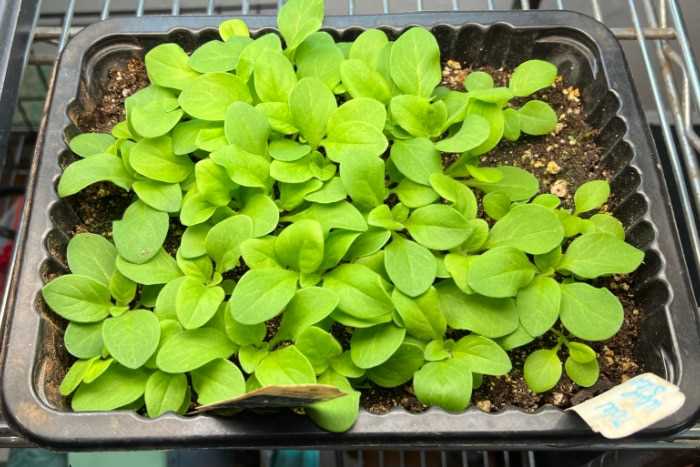

Adequate air circulation is important for preventing diseases and promoting strong seedling growth. Use a small fan or open a nearby window to provide gentle air movement.
7. Thin out the seedlings
Once the seedlings have developed their first set of true leaves, thin them out to allow more space for each plant to grow. Remove the weaker seedlings, leaving only the strongest and healthiest ones.
8. Fertilize the seedlings
After the seedlings have been growing for a few weeks, start feeding them with a diluted fertilizer to provide them with necessary nutrients. Follow the instructions on the fertilizer package for proper dilution ratios.
9. Harden off the seedlings
About a week before transplanting the seedlings outdoors, gradually expose them to outdoor conditions to harden them off. Start by placing them outside in a sheltered spot for a few hours each day, gradually increasing the exposure over the course of a week.
10. Transplant the seedlings
Once the seedlings have been hardened off, they are ready to be transplanted into their final growing location. Choose a sunny spot with well-draining soil and amend it with compost if necessary. Dig a hole for each seedling and gently place them in, firming the soil around the roots.
Following these steps will ensure that your petunia seedlings grow into healthy and robust plants, ready to flourish in your garden. Enjoy the beautiful blooms and vibrant colors that petunias offer!
Choose the Right Seeds for Optimal Development
Choosing the right seeds is crucial for the optimal development of your petunia seedlings. Here are some essential tips to consider when selecting seeds:
- Buy from reliable sources: It is important to purchase petunia seeds from reputable suppliers or seed companies. This ensures that you are getting high-quality seeds that are free from diseases and pests.
- Choose the right variety: There are different types of petunias available, including grandiflora, multiflora, and milliflora. Each variety has its own characteristics, such as flower size, growth habit, and resistance to certain diseases. Consider your specific needs and preferences when selecting the variety.
- Check the seed packet: Carefully read the information on the seed packet. Look for details on germination requirements, ideal planting conditions, and expected growth habits. This will help you understand the specific needs of the seeds and ensure that you provide the proper care.
- Consider hybrid versus heirloom: Hybrid petunia seeds are bred for specific traits, such as improved flower color or disease resistance. Heirloom seeds are open-pollinated varieties that have been passed down through generations. Consider your goals and preferences when deciding between hybrid and heirloom seeds.
By choosing the right seeds, you can set your petunia seedlings up for success right from the start. Remember to follow proper planting and care instructions to maximize their growth and development.
Prepare a Suitable Growing Environment
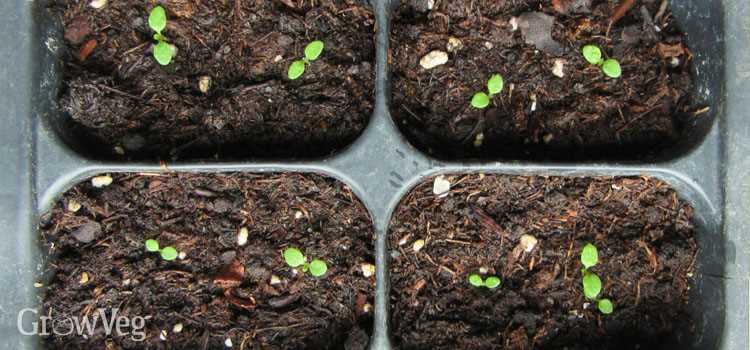

Creating the right growing environment for your petunia seedlings is essential for their successful development. Follow these tips to ensure a suitable environment:
- Select a well-draining container: Use a pot or container with drainage holes to prevent waterlogging, which can lead to root rot.
- Choose the right soil: Use a high-quality, well-draining potting soil. Avoid heavy garden soil, as it can retain too much moisture and hinder the growth of the seedlings.
- Provide ample sunlight: Place the seedlings in a location where they can receive at least 6-8 hours of direct sunlight each day. Petunias thrive in full sun.
- Maintain temperature: Keep the growing environment within a temperature range of 60-70°F (15-21°C) during the day and around 50-60°F (10-15°C) at night.
- Ensure proper air circulation: Adequate airflow around the seedlings helps prevent the development of diseases and provides the necessary oxygen for growth. Avoid overcrowding the containers.
- Protect from frost: If there is a risk of frost in your area, move the containers indoors or cover them with a frost cloth to protect the seedlings until the danger has passed.
- Water correctly: Water the seedlings thoroughly but allow the top inch of soil to dry before watering again. Avoid overwatering, as it can lead to root rot.
By preparing a suitable growing environment, you give your petunia seedlings the best chance to develop into strong and healthy plants. Taking these steps will help set the foundation for their growth and ensure successful early stage development.
Start the Germination Process
Germinating petunia seeds is the first step in growing a robust petunia seedling. Follow these essential tips to ensure successful germination:
- Choose high-quality seeds: Select petunia seeds that are certified and from a reputable supplier. This guarantees the seeds’ viability and chances of successful germination.
- Provide the right conditions: Petunia seeds require warm temperatures and consistent moisture to germinate. Place the seeds in a warm location, ideally around 70-75°F (21-24°C), to facilitate germination. Use a seed tray or pots with drainage holes to prevent waterlogging.
- Prepare the seed-starting medium: Use a sterile seed-starting mix that provides good drainage. This ensures the seeds are in an optimal environment without the risk of disease or mold growth.
- Sow the seeds: Gently press the petunia seeds into the soil, ensuring they are covered with a thin layer of soil. Maintain proper spacing between seeds to allow air circulation and minimize the risk of overcrowding.
- Maintain moisture: While the seeds are germinating, it is crucial to keep the soil evenly moist. Water gently using a fine mist sprayer or a watering can with a rose attachment to prevent displacing the seeds or damaging delicate seedlings.
- Provide consistent warmth and light: Place the seed tray or pots in a location that receives bright, indirect light. Use a heating mat or maintain the ambient temperature if necessary to ensure consistent warmth.
- Label and track: It’s essential to label your seed trays or pots to keep track of the varieties you are growing. This helps in identifying and monitoring their progress as they germinate.
By following these tips and providing the ideal conditions, you can ensure a successful germination process for your petunia seeds. This sets the foundation for healthy and robust petunia seedlings ready for further growth and development.
Provide Adequate Light and Temperature
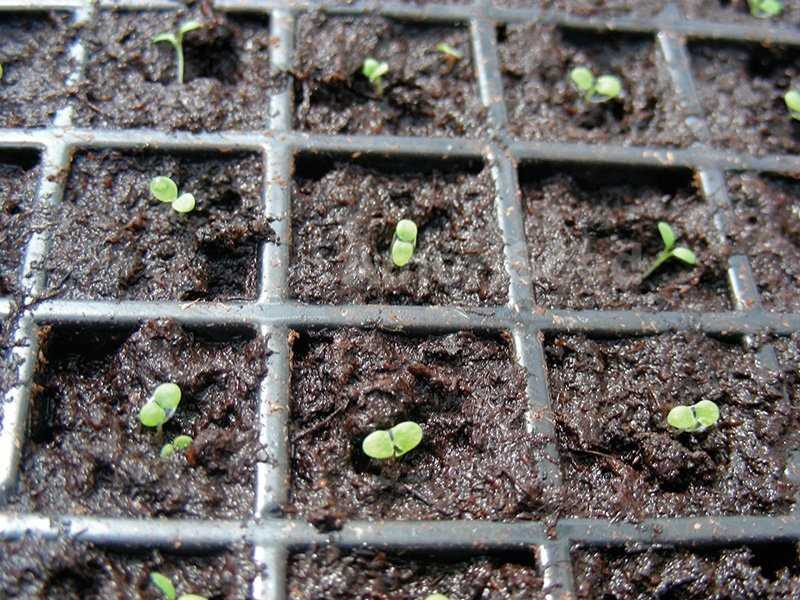

In order to grow a robust petunia seedling, it is essential to provide adequate light and maintain the right temperature. Both of these factors play a crucial role in the early stage development of the seedling.
Light Requirements
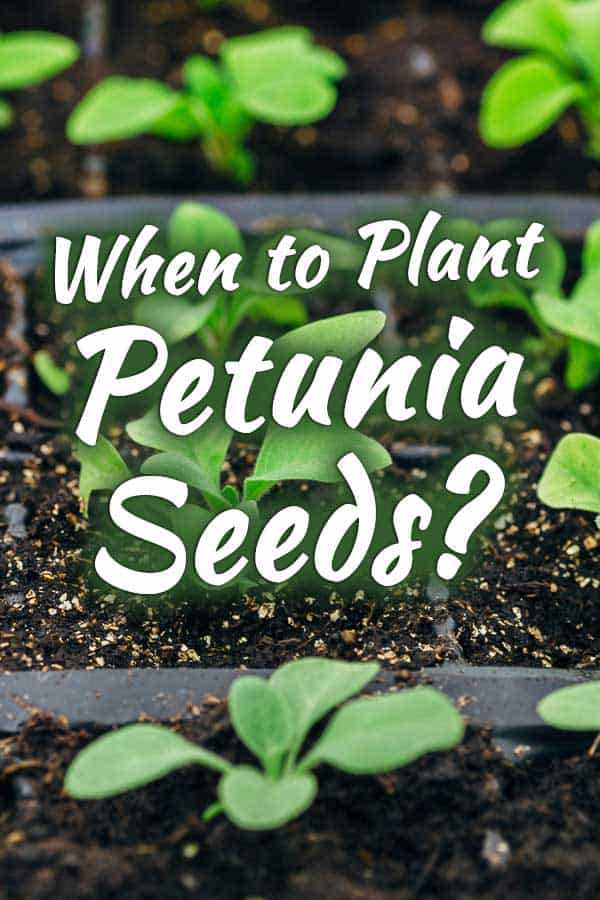

Petunias thrive in full sunlight, so it is important to place the seedlings in a location that receives at least 6 to 8 hours of direct sunlight each day. If you are growing petunia seedlings indoors, make sure to place them near a south-facing window or provide artificial grow lights that mimic natural sunlight.
Insufficient light can result in weak and leggy seedlings, as well as poor flower development. If you notice that the seedlings are stretching towards the light or have pale leaves, it is an indication that they are not receiving enough light.
Temperature Requirements
Petunias are warm-weather plants and prefer temperatures between 70 to 80 degrees Fahrenheit (21 to 27 degrees Celsius) during the day and around 60 degrees Fahrenheit (15 degrees Celsius) at night. It is important to maintain these temperature ranges to ensure proper growth and development of the seedlings.
Exposure to temperature extremes can hinder the growth of petunia seedlings. If the temperature drops below 50 degrees Fahrenheit (10 degrees Celsius), the seedlings may become stunted or even die. Likewise, excessive heat can cause wilting and stress the seedlings.
Consider using a thermometer to monitor and maintain the temperature levels for your petunia seedlings. If you are growing them indoors, you can use a heating pad or heat mat to provide bottom heat and regulate the temperature.
Watering and Fertilizing Techniques
Watering
Proper watering is crucial for the healthy growth of petunia seedlings. Here are some tips to ensure you water your seedlings correctly:
- Water the seedlings when the top inch of the soil feels dry to the touch.
- Avoid overwatering as it can lead to root rot and other diseases.
- Water the seedlings gently, aiming for the base of the plants to avoid wetting the foliage.
- Use a watering can or a gentle spray nozzle on a hose to water the seedlings.
- Make sure the water penetrates the soil evenly and reaches the roots.
Fertilizing
Providing the right nutrients is important for the healthy development of petunia seedlings. Here’s what you need to know about fertilizing:
- Start fertilizing the seedlings when they have developed their second set of true leaves.
- Use a balanced liquid fertilizer or a slow-release granular fertilizer specifically formulated for seedlings.
- Follow the instructions on the fertilizer package for the correct dosage and application method.
- Apply the fertilizer at least once a week, but avoid overfertilizing as it can cause nutrient burn.
- Water the seedlings after applying the fertilizer to help distribute the nutrients evenly in the soil.
By following these watering and fertilizing techniques, you can ensure your petunia seedlings receive the proper care and nutrition they need to grow into robust and healthy plants.
Proper Transplanting Techniques
Transplanting petunia seedlings is an essential step in their development. It allows them to establish stronger roots and adjust to a new environment. Here are some important tips for proper transplanting:
- Timing: Transplant petunia seedlings when they have at least two sets of true leaves. This usually occurs around 4-6 weeks after sowing the seeds.
- Preparation: Prepare the planting area in advance by loosening the soil and adding organic matter to improve drainage and fertility.
- Pot Selection: Choose pots or containers that are at least 4-6 inches deep and have drainage holes to prevent waterlogging. This will allow the roots to develop properly.
- Watering: Water the seedlings thoroughly a few hours before transplanting to ensure they are well-hydrated.
- Transplanting Process: Gently remove the seedlings from their original containers, being careful not to damage their delicate roots. You can use a small trowel or your hands to gently loosen the soil around the seedlings.
- Planting Depth: Dig a hole in the prepared soil that is deep enough to accommodate the seedling’s root system. The top of the root ball should be level with or slightly above the soil surface.
- Spacing: Space the transplanted seedlings at least 12 inches apart to allow for proper air circulation and avoid competition for nutrients and sunlight.
- Aftercare: After transplanting, water the seedlings again to help them settle into their new environment. Protect them from strong winds and extreme temperatures for the first few days.
Following these transplanting techniques will give your petunia seedlings the best chance of thriving and growing into robust plants. Remember to provide them with adequate care and attention as they continue to grow.
Preventing and Managing Common Issues
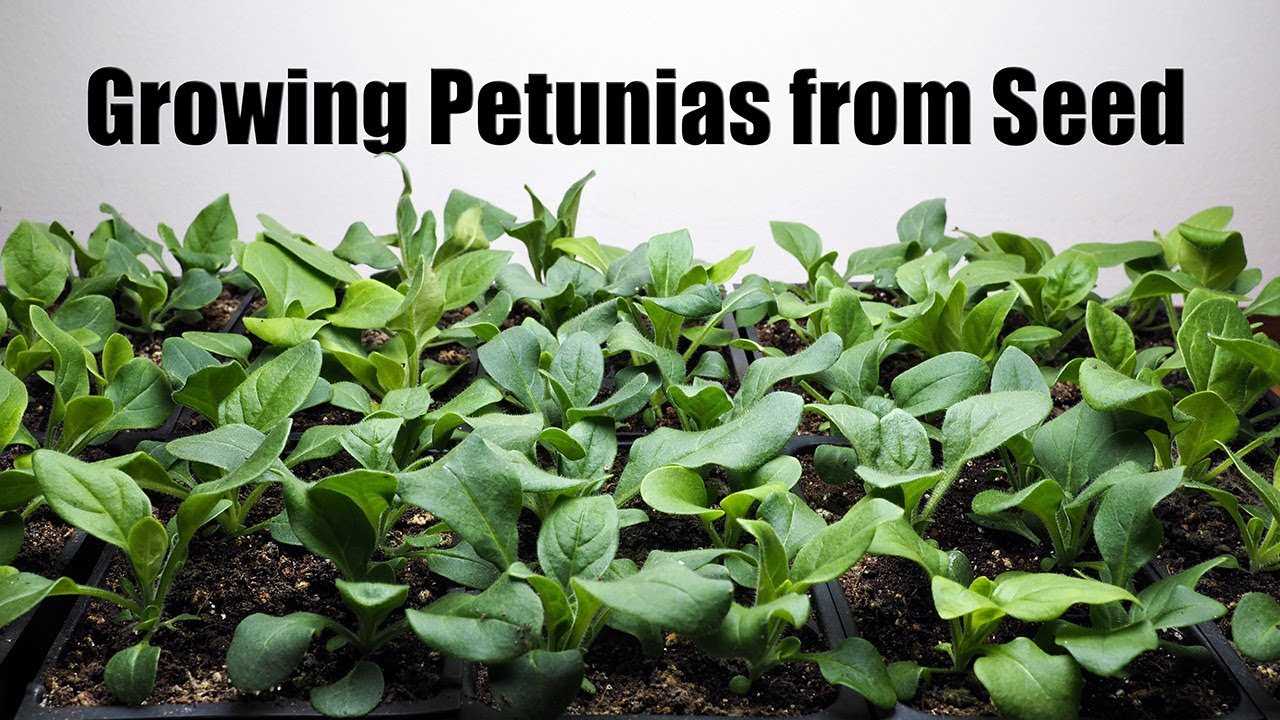

1. Overwatering
One common issue that can negatively impact petunia seedlings is overwatering. Overwatering can lead to root rot and other fungal diseases that can kill the seedlings. To prevent overwatering:
- Allow the soil to dry slightly between waterings.
- Use well-draining soil that allows excess water to escape.
- Avoid watering from above, as this can promote disease spread. Instead, water at the base of the plant.
2. Underwatering
On the other hand, underwatering can also be problematic for petunia seedlings. It can cause stunted growth and wilting. To prevent underwatering:
- Check the soil regularly and water when it feels dry.
- Water thoroughly, ensuring the soil is evenly moist.
- Consider using self-watering pots or containers with a water reservoir to maintain consistent moisture levels.
3. Lack of Sunlight
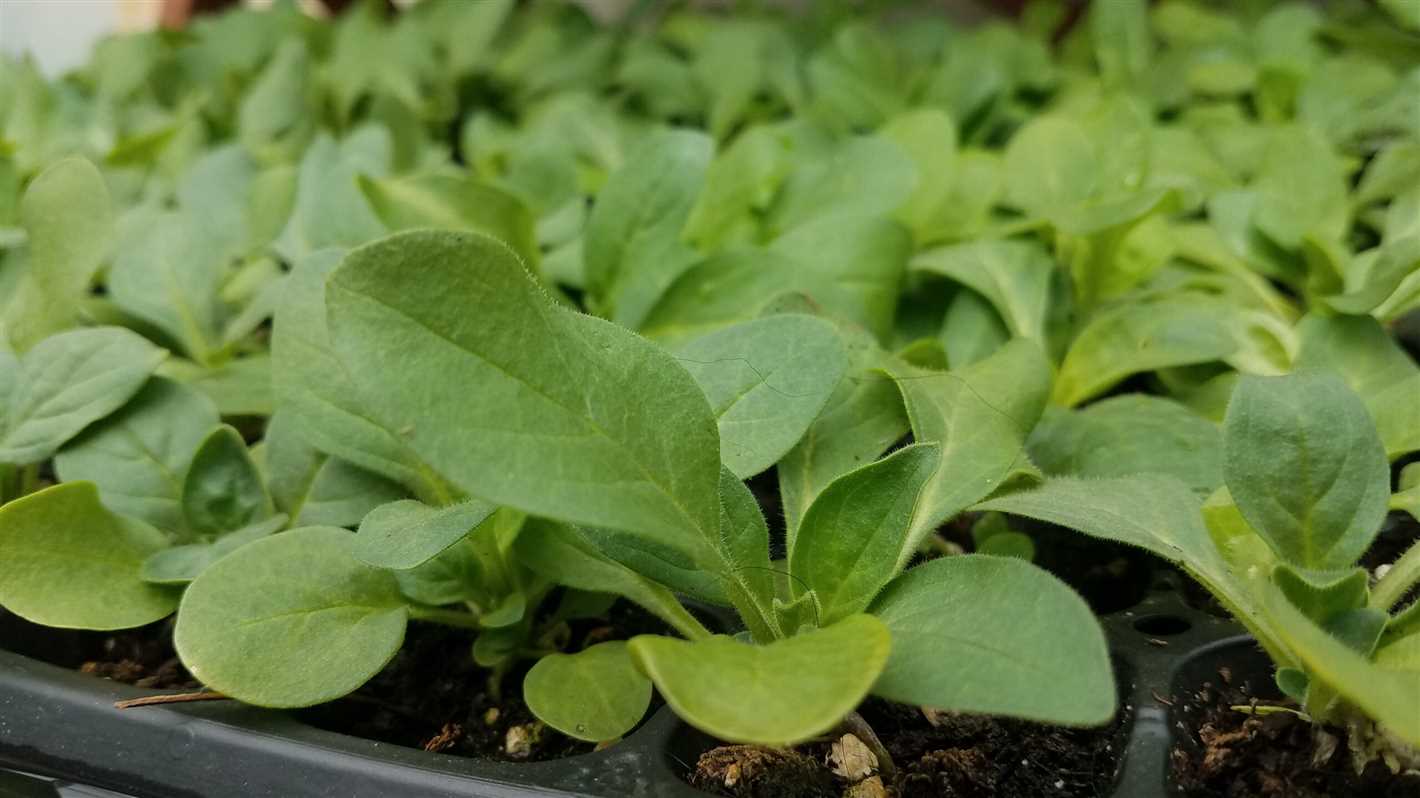

Petunia seedlings require plenty of sunlight to grow and thrive. Insufficient sunlight can result in leggy, weak plants with poor flower development. To ensure adequate sunlight:
- Place the seedlings in a location that receives at least 6-8 hours of direct sunlight per day.
- If growing indoors, use supplemental grow lights to provide sufficient light intensity.
4. Nutrient Deficiencies
Petunia seedlings may experience nutrient deficiencies, such as lack of nitrogen, phosphorus, or potassium. These deficiencies can manifest as yellowing leaves, reduced growth, and poor flowering. To prevent nutrient deficiencies:
- Use a balanced fertilizer formulated for seedlings or young plants.
- Apply fertilizer according to the manufacturer’s instructions.
- Monitor the plants for signs of nutrient deficiency and adjust the fertilizer application as needed.
5. Pests and Diseases
Petunia seedlings are susceptible to a range of pests and diseases, such as aphids, whiteflies, and fungal infections. To prevent and manage these issues:
- Inspect the plants regularly for signs of pests or diseases.
- Remove any affected plants or plant parts to prevent the spread of pests or diseases.
- Use organic pesticides or insecticidal soaps to control common pests.
- Practice proper sanitation by cleaning up fallen leaves and debris around the plants.
Gradual Acclimation to Outdoor Conditions
Gradual acclimation to outdoor conditions is a crucial step in growing a robust petunia seedling. While petunias are hardy plants, they can still be sensitive to sudden changes in temperature, wind, and sunlight. By following the proper acclimation process, you can help your petunia seedling adjust to its new environment and increase its chances of thriving.
1. Prepare the seedling for outdoor conditions
- Ensure that your petunia seedling has been properly watered and is well-hydrated before beginning the acclimation process.
- Inspect the seedling for any signs of disease or pests, and treat accordingly before taking it outside.
- Choose a mild, overcast day with minimal wind to begin the acclimation process. This will help reduce stress on the seedling.
2. Start with short periods of outdoor exposure
- Begin by placing the petunia seedling in a shady spot outdoors for just a few hours a day.
- Gradually increase the amount of time the seedling spends outdoors over the course of several days.
- Monitor the seedling closely during this time, looking for any signs of stress or wilting.
3. Protect the seedling from extreme conditions
- If the weather suddenly turns extremely hot, cold, or windy, bring the seedling inside or provide temporary shelter.
- Consider using plant protection devices such as cloches or row covers to shield the seedling from harsh weather conditions.
4. Gradually increase sunlight exposure
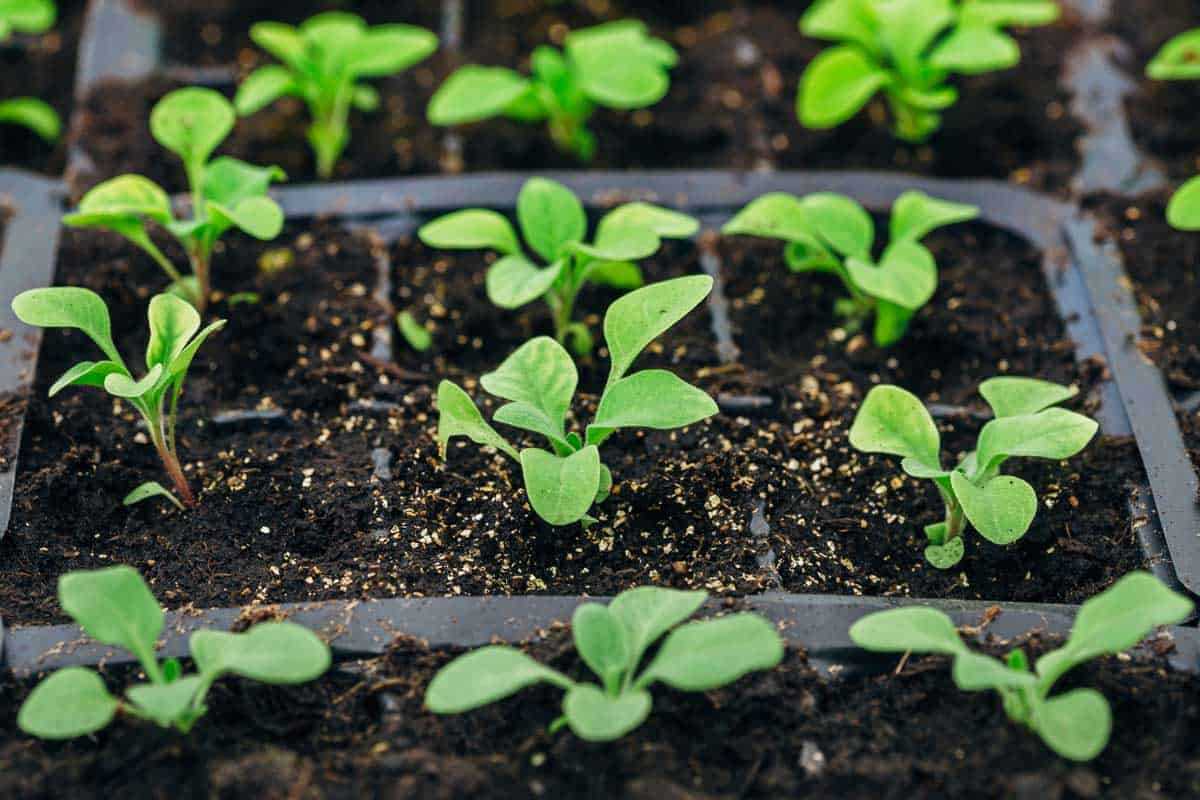

- As the seedling becomes more accustomed to outdoor conditions, gradually increase its exposure to sunlight.
- Start by placing the seedling in a location with partial shade, and then gradually expose it to more direct sunlight over time.
- Monitor the seedling for any signs of sunburn or leaf damage, and adjust its sun exposure accordingly.
5. Transition to permanent outdoor placement
- After several weeks of gradually acclimating the seedling to outdoor conditions, it will be ready for permanent placement in your garden or container.
- Choose a location that provides the appropriate amount of sunlight and soil conditions for petunias.
- Ensure that the seedling has been properly hardened off and is strong enough to withstand any potential weather fluctuations.
By following these steps, you can ensure that your petunia seedling has a smooth transition from indoor to outdoor conditions, setting it up for healthy growth and a vibrant display of flowers.
Questions and Answers:
What is the best way to grow petunia seedlings?
The best way to grow petunia seedlings is to start by selecting high-quality seeds and providing them with the right conditions for germination. This includes providing them with a warm and well-lit environment, keeping the soil moist but not too wet, and using a well-draining potting mix.
How long does it take for petunia seedlings to germinate?
Petunia seedlings typically take 7 to 10 days to germinate. However, this can vary depending on the specific variety of petunia and the temperature and light conditions in which they are being grown.
What should I do once my petunia seedlings have germinated?
Once your petunia seedlings have germinated, it is important to provide them with plenty of light to promote healthy growth. You should also thin out the seedlings if they are overcrowded, as this will give the remaining seedlings more space to grow.
How often should I water my petunia seedlings?
You should water your petunia seedlings whenever the top inch of soil feels dry to the touch. It is important not to overwater them, as this can lead to root rot and other fungal diseases.
What kind of fertilizer should I use for petunia seedlings?
For petunia seedlings, it is best to use a balanced liquid fertilizer, diluted to half-strength. This should be applied once a week, following the instructions on the fertilizer packaging.
When should I transplant my petunia seedlings into larger pots?
You should transplant your petunia seedlings into larger pots once they have developed a few sets of true leaves and are large enough to handle. This is usually around 4 to 6 weeks after germination.







